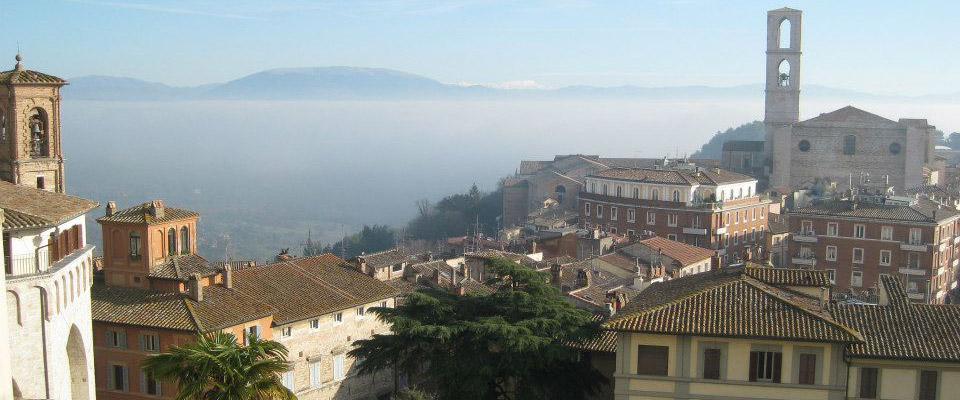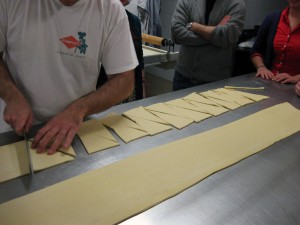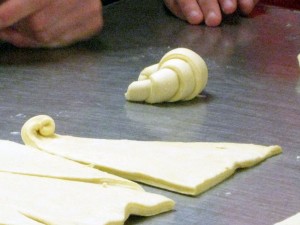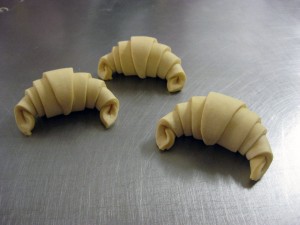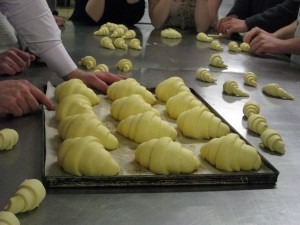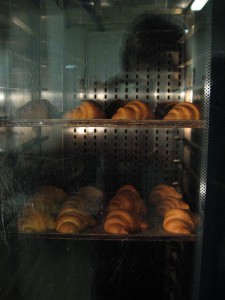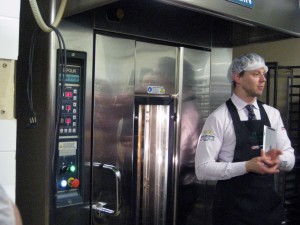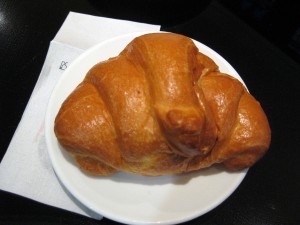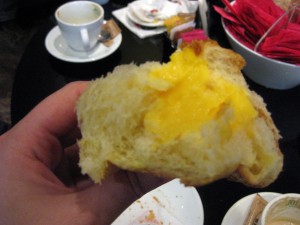Who loves pastries? Well it’s become painfully obvious that I do. But what better than to go to a pastry shop, learn how they are made, and then eat fresh croissants? Count me in.
Last week my Italian class went to a local pasticceria and we went to the back room and learned how croissants are made. We were then able to make some ourselves and eat some that were warm out of the oven – yum! Forgive me for not remembering all of the details, but here is the general process.
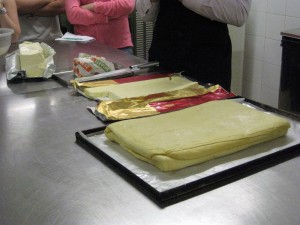
You need dough and (good quality) butter! Our guide listed the ingredients but I couldn’t quite catch them all (note: he was speaking in Italian the whole time).
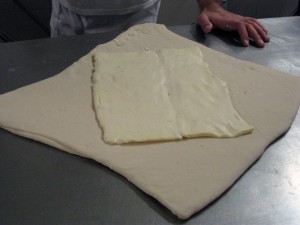
A layer of butter (yes that is a lot of butter, but let’s be real you knew that is needed) goes on top of the dough.
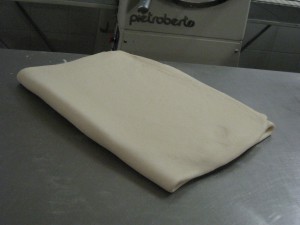
You fold the dough over the butter, roll it out (the best is with a machine), fold more, roll it out. This happens around 4 times.
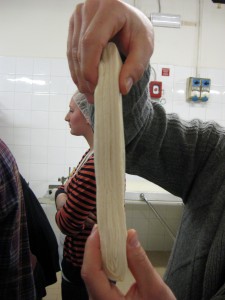
If you were to cut the dough after this process and folded the dough a last time, it would look like this. If you look closely, you can see all the layers created by the dough and butter. Yay flaky pastry!
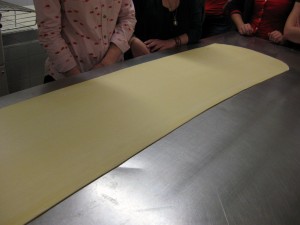
After the last rolling out of the dough, you get a very long piece of dough! This was only about half of the full length.
